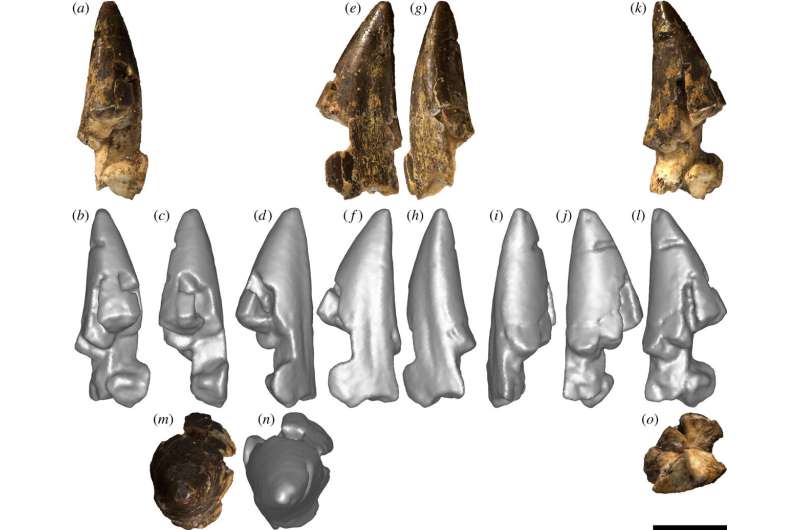Rare sauropod dinosaur teeth uncovered in Australia

A team of researchers at the Australian Age of Dinosaurs Natural History Museum The Jump-Up, working with colleagues from the University of New England and University College London, has uncovered sauropod teeth fossils at the Upper Cretaceous Winter Formation of Queensland in Australia. In their paper published in the journal Royal Society Open Science, the group describes their find and its importance to understanding the history of the creatures in Australia.
Sauropods were big, plant-eating dinosaurs with long necks that lived in many parts of the world. Fossils have been found in many countries, but have been rare in Australia due to its unique geography. The country has very few places where rocks from the Cretaceous or Jurassic are exposed at the surface. The dig site for this new effort, called Mitchell, is little more than a small mound sticking up out of a vast, flat landscape used to graze sheep. The site has thus far yielded 17 sauropod teeth.
The researchers note that sauropods did not chew their food and thus, they had no molars. All of their teeth were semi-conical and curved with a pointed end and were slightly offset. The dinosaurs would have used them in conjunction with their tongue and jaw to grab leaves and snip them into their mouths, which they would consume as is—no pre-processing occurred in the mouth. Thus, the gut would have had to do all the work, a process that could take as long as two weeks.
The researchers found marks on the teeth indicating that they had been worn down by constant eating. The marks also provided clues about the types of plants the dinosaur had been consuming—flowering plants, conifers and gingkos, and possibly horsetails, which no longer grow in Australia. The limits of the creatures' neck length indicate that that they likely ate from plants that had leaves that were approximately 1 meter from the ground to approximately 10 meters. The researchers obtained precise measurements of the teeth by making casts of them, which were then coated in a very thin layer of gold—that allowed for study of dental features using an electron microscope.Tooth fast, tooth curious? New study uncovers novel approach to plant-based diet, unique to long-necked dinosaurs
More information: Stephen F. Poropat et al, Sauropod dinosaur teeth from the lower Upper Cretaceous Winton Formation of Queensland, Australia and the global record of early titanosauriforms, Royal Society Open Science (2022). DOI: 10.1098/rsos.22038
Journal information: Royal Society Open Science
© 2022 Science X Network
No comments:
Post a Comment